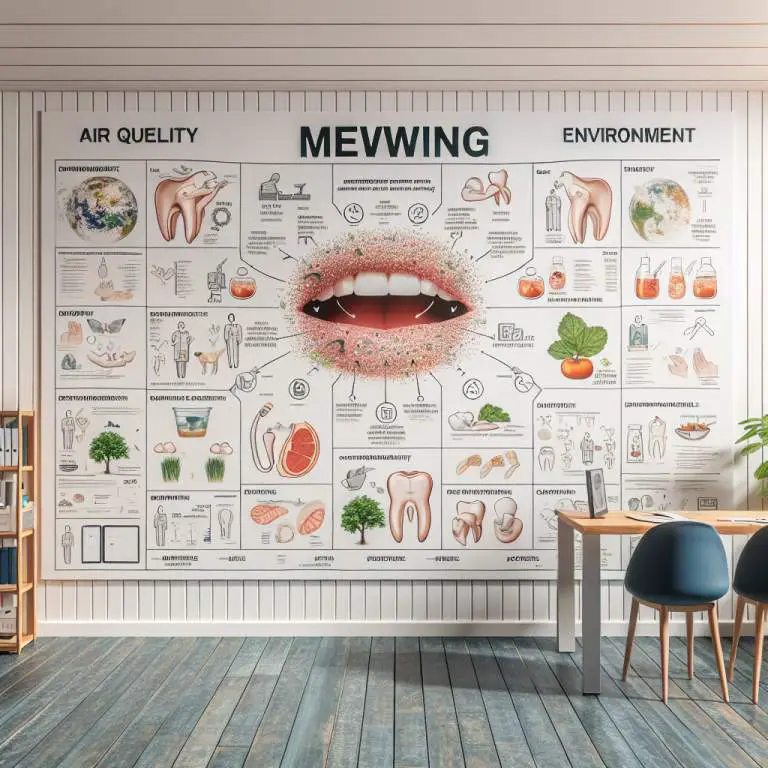How does mewing influence facial muscle tone?
Mewing, a technique that involves proper tongue posture, can improve facial muscle tone by encouraging the muscles to engage and work more efficiently. When you practice mewing correctly, your jawline becomes more defined, and your cheekbones may appear more prominent due to the increased muscle activity. This method helps in strengthening the facial muscles over time, leading to a more toned and structured appearance.

How does mewing work to engage facial muscles?
Mewing is a technique that involves placing your tongue against the roof of your mouth. This position is supposed to be held as often as possible during the day. When you do this, it’s like giving your facial muscles a little workout.
This action engages several muscles in your face and neck. Think of it as holding a pose or doing a light exercise for these muscles. Over time, just like with any workout, these muscles can start to change and get stronger because they’re being used in a new way.
What are the primary muscles affected by mewing?
The main muscles that get involved when you practice mewing are the ones around your jawline, under your chin, and in your neck. These include the masseter muscle, which helps you chew, and the genioglossus muscle, which is part of what moves your tongue.
Other important muscles include those that help shape your mouth and cheeks. By engaging these through mewing, you’re essentially targeting areas that can influence the appearance of your facial structure over time.
Can mewing improve overall facial structure?
Many people believe that mewing can help improve how their face looks by making changes to their facial structure. The idea is that by regularly engaging these specific muscles, you might be able to influence how strong or defined certain parts of your face appear.
For example, some say it can help define your jawline or make your cheekbones seem more prominent. However, it’s important to remember that everyone’s face is different, so changes will vary from person to person.
How long does it take to see changes in facial muscle tone from mewing?
Seeing changes from mewing doesn’t happen overnight. It’s more like a slow process that happens over months or even years. Just like with getting stronger arms or legs from exercising, changing muscle tone in your face takes consistent effort over time.
Some people might start noticing small differences in a few months, while for others it could take longer. It really depends on how often you practice mewing and how your body responds to this type of muscle engagement.
| Muscle Group | Impact of Mewing |
|---|---|
| Masseter Muscle | Potentially strengthened, leading to a more defined jawline. |
| Buccinator Muscle | Reduced usage may decrease size, potentially slimming the cheeks. |
| Mentalis Muscle | Can be positively impacted, promoting a firmer chin area. |
| Tongue Muscles | Strengthened through proper positioning, improving overall tongue posture. |
| Temporalis Muscle | Might experience indirect benefits from improved jaw alignment and function. |
Are there any risks associated with improper mewing techniques?
When people try mewing the wrong way, they might face some problems. One common issue is putting too much pressure on the jaw or teeth. This can lead to pain in these areas over time.
Another risk of incorrect mewing is developing an uneven bite. If someone pushes more with one side of their tongue, it could make their teeth align badly. It’s important to be careful and follow the right steps.
How can one ensure they are mewing correctly for maximum benefits?
To make sure you’re mewing correctly, start by keeping your mouth closed with your teeth lightly touching. Then, press your tongue against the roof of your mouth. The whole tongue should be involved, not just the tip.
It’s also a good idea to check out videos or guides from experts. They can show you how to do it right. Remember, it should feel comfortable and not cause any pain.
What other exercises complement mewing for facial muscle tone improvement?
Besides mewing, there are other exercises that can help improve facial muscle tone. One popular exercise is called “cheek lifts.” This involves smiling as wide as you can while keeping your lips together, then using your fingers to gently lift the cheeks upwards.
Another helpful exercise is “chin presses.” For this, place your thumb under your chin and gently push upward while opening and closing your mouth slowly. These exercises, along with proper mewing, can enhance facial structure over time.
Final Thoughts
Mewing can be a great way to improve facial muscle tone if done correctly. However, it’s important to be aware of the risks of doing it wrong and take steps to learn the proper technique.
Incorporating other facial exercises along with mewing can provide even better results. Remember, patience and consistency are key since changes won’t happen overnight.






